Vivien Leigh in her twilight years
Tuesday, March 26, 2024
Tuberculosis, depression, and excessive tobacco and alcohol consumption aged Vivien Leigh prematurely, but they did not destroy her beauty or diminish her elegance.
[Rafael Narbona, El Español]

Vivien Leigh photographed by Roloff Beny in 1958. © El Español
Backstory
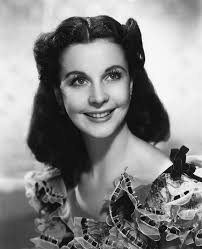 Vivien Leigh (5 November 1913 – 8 July 1967) was a British actress, who won the Academy Award for Best Actress twice, for her performances as Scarlett O'Hara in Gone with the Wind (1939) and Blanche DuBois in the film version of A Streetcar Named Desire (1951), a role she had also played on stage in London's West End in 1949. Vivien Leigh (5 November 1913 – 8 July 1967) was a British actress, who won the Academy Award for Best Actress twice, for her performances as Scarlett O'Hara in Gone with the Wind (1939) and Blanche DuBois in the film version of A Streetcar Named Desire (1951), a role she had also played on stage in London's West End in 1949.
After completing her drama school education, Vivien Leigh appeared in small roles in four films in 1935 and progressed to the role of heroine in "Fire Over England" (1937). Lauded for her beauty, Leigh felt that her physical attributes sometimes prevented her from being taken seriously as an actress.
Despite her later fame as a screen actress, Leigh was primarily a stage performer. During her 30-year career, she played roles ranging from the heroines of Noel Coward and George Bernard Shaw comedies to classic Shakespearean characters such as Ophelia, Cleopatra, Juliet, and Lady Macbeth.
Photo: Wikipedia
Later in her life, she performed as a character actress in a few films.
At the time, the public strongly identified Vivien Leigh with her second husband, Laurence Olivier, who was her spouse from 1940 to 1960. Leigh and Olivier starred together in many stage productions, with Olivier often directing, and in three films.
She earned a reputation for being difficult to work with, and for much of her life she had bipolar disorder, as well as recurrent bouts of chronic tuberculosis, which was first diagnosed in the mid-1940s and ultimately led to her early death at age 53.
The twilight years
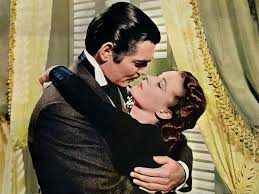 Vivien, who had contracted the disease at thirty-five, continued to smoke eighty cigarettes a day, a habit acquired during the filming of Gone with the Wind, when a benzedrine-intoxicated David O. Selznick demanded twelve-hour workdays and Victor Young hurled intolerable profanity at her for daring to make suggestions on how to play the impetuous Scarlett O'Hara. Vivien, who had contracted the disease at thirty-five, continued to smoke eighty cigarettes a day, a habit acquired during the filming of Gone with the Wind, when a benzedrine-intoxicated David O. Selznick demanded twelve-hour workdays and Victor Young hurled intolerable profanity at her for daring to make suggestions on how to play the impetuous Scarlett O'Hara.
After separating from Laurence Olivier, Vivien commented that she did not want to live long, because although she was not unhappy with Jack Merivale, her last partner, the passion was only a pale memory and not an everyday experience.
Leigh with Gable in"Gone with the Wind"
The romance with "Larry", the name friends and family used to refer to Olivier, had included great storms, intense moments of anger, frenzy and madness, but it had also taught him that paradise was not 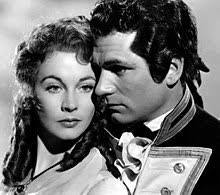 a dream, a mere fantasy, but a sweet torment akin to Scarlett's unrequited love for Ashley Wilkes. "I longed for that sweet torment and couldn't bear to think that it was something irretrievably lost." a dream, a mere fantasy, but a sweet torment akin to Scarlett's unrequited love for Ashley Wilkes. "I longed for that sweet torment and couldn't bear to think that it was something irretrievably lost."
Tuberculosis, depression, excessive tobacco and alcohol consumption aged Vivien prematurely, but they did not destroy her beauty or diminish her elegance.
In the main photograph above she only needs to tilt her head slightly to give off sensuality and mystery. Wearing a black suit and arms crossed, the jewels she displays (a ring, a bracelet and earrings) convey not ostentation, but refinement.
Leigh with Olivier
Vivien, who had contracted tuberculosis at the age of thirty-five, continued to smoke eighty cigarettes a day at the end of her life
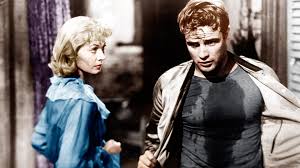 Trapped by a spiral of euphoria and sadness, illusions and disappointments, she barely knew happiness. Unstable, tragic, and intelligent, she externalized her own inner torment in A Streetcar Named Desire (Elia Kazan, 1951), where she gives life to a kind of Scarlett O'Hara stripped of Tara and with a faded beauty. Trapped by a spiral of euphoria and sadness, illusions and disappointments, she barely knew happiness. Unstable, tragic, and intelligent, she externalized her own inner torment in A Streetcar Named Desire (Elia Kazan, 1951), where she gives life to a kind of Scarlett O'Hara stripped of Tara and with a faded beauty.
This portrayal brought her second Oscar for Best Actress.
Leigh with Brando in A Streetcar Named Desire
Her Blanche Dubois is not far from the Norma Desmond of The Twilight of the Gods (Billy Wilder, 1950). Gloria Swanson plays an old silent film actress who longs to regain the fame destroyed by the success of talkies. That's not the case for Vivien Leigh, who never wanted to be a star.
However, Blanche and Norma share a fear of old age. They know that they are withering away and their imagination does not stop travelling to the past, looking for those moments of happiness and splendour that their beauty gave them. Both abuse alcohol and groom themselves with great care, trying to hide the ravages of age.
Despite her twilight appearance, Vivien Leigh still exudes strength, ambition, and fervor, but her eyes avoid direct confrontation with the camera.
Vivien Leigh died in 1967 at the age of 53. We would have preferred her to live to be 102, like Olivia de Havilland, her partner and rival in Gone with the Wind.
More than half a century has elapsed since then, but anyone who desires to know passion, courage, romantic despair, obstinacy, nostalgia, the most flowery fantasy, and the most foolish pride, is still compelled to follow in the footsteps of Scarlett O'Hara through the red clay of Tara or under the magnolias of The Twelve Oaks.
It's not true that the wind blows everything away. The beautiful and the good always endure. Vivien Leigh is not a handful of dust, but a rose of imperishable beauty. In 1963, a gardener created a pink with her name on it. Fragrant, crimson red and with black shading on the edge of its petals, it defeats death every time. That rose is really Vivien Leigh, and because of her, the world is a happier and brighter place.
© The Culture Vulture
Acknowledgements:
Country Living Magazine (photos)
El Español
Facebook
Paul Whitelock (Translator)
Rafael Narbona (author of article in El Español)
Wikipedia
Tags:
Academy Award for Best Actress, alcohol consumption, Ashley Wilkes, "A Streetcar Named Desire", Blanche DuBois, Brando, character actress, Clark Gable, Cleopatra, Country Living Magazine, Culture Vulture, depression, Facebook, "Fire Over England", Gable, George Bernard Shaw, "Gone with the Wind", Juliet, Lady Macbeth, Larry, Lawrence Olivier, Marlon Brando, Noel Coward, Olivia De Havilland, Olivier, Ophelia, Oscar, Paul Whitelock, Rafael Narbona, Roloff Beny, Scarlett O'Hara, tobacco consumption, Tuberculosis, Vivien Leigh, West End, Wikipedia
 0
Like
Published at 11:55 PM Comments (0)
0
Like
Published at 11:55 PM Comments (0)
SEMANA SANTA (Holy Week)
Sunday, March 24, 2024
Holy Week (Semana Santa) begins today, Palm Sunday (Domingo de Ramos), and lasts until next Sunday, Easter Sunday (Domingo de Resurrección).
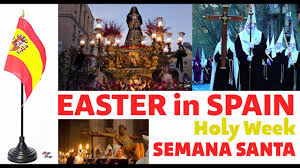 In Spain Semana Santa is the annual tribute of the Passion of Jesus Christ celebrated by Catholic religious brotherhoods (hermandades) and fraternities that perform penance processions on the streets of almost every Spanish city and town during Holy Week – the last week of Lent, immediately before Easter. In Spain Semana Santa is the annual tribute of the Passion of Jesus Christ celebrated by Catholic religious brotherhoods (hermandades) and fraternities that perform penance processions on the streets of almost every Spanish city and town during Holy Week – the last week of Lent, immediately before Easter.
These hermandades have their origins in the Middle Ages, but a number of them were created during the Baroque Period, inspired by the Counterreformation and also during the 20th and 21st centuries. The membership is usually open to any Catholic person and family tradition is an important element to become a member or "brother" (hermano).
Some major differences between Spanish regions are perceivable in these processions: Semana Santa sees its most glamorous celebrations in Andalucía, especially in Jerez de la Frontera, Granada, Málaga and Sevilla, while those of the Castilla y León region see the more sombre and solemn processions in Zamora, León and Valladolid.
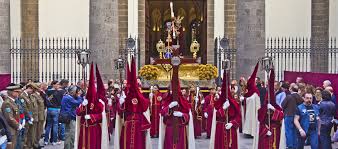 A common feature in Spain is the almost general usage of the nazareno or penitential robe for some of the participants in the processions. This garment consists of a tunic, a hood with conical tip (capirote) used to conceal the face of the wearer, and sometimes a cloak. The exact colours and forms of these robes depend on the particular fraternity. A common feature in Spain is the almost general usage of the nazareno or penitential robe for some of the participants in the processions. This garment consists of a tunic, a hood with conical tip (capirote) used to conceal the face of the wearer, and sometimes a cloak. The exact colours and forms of these robes depend on the particular fraternity.
The robes were widely used in the medieval period for penitents, who could demonstrate their penance while still masking their identity. These nazarenos carry processional candles or rough-hewn wooden crosses, may walk the city streets barefoot, and, in some places may wear shackles and chains on their feet as penance. In some areas, sections of the participants wear dress freely inspired by the uniforms of the Roman Legion.
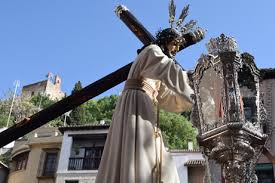 The other common feature is that every brotherhood carries magnificent floats (pasos or tronos) or with sculptures that depict different scenes from the gospels related to the Passion of Christ or the Sorrows of Virgin Mary. The other common feature is that every brotherhood carries magnificent floats (pasos or tronos) or with sculptures that depict different scenes from the gospels related to the Passion of Christ or the Sorrows of Virgin Mary.
Brotherhoods have owned and preserved these "tronos" for centuries in some cases. Usually, the " tronos " are accompanied by marching bands performing "marchas procesionales", a specific type of composition, devoted to the images and fraternities.
Note: A version of this article in Spanish is available here:
SEMANA SANTA (Holy Week) (eyeonspain.com)
© The Culture Vulture
Tags:
Andalucia, brotherhood, Castilla y León, cofradias, Culture Vulture, Domingo de Ramos, Domingo de Resurrección, Easter, Easter Sunday, fraternities, Granada, hermandades, Holy Week, Jerez de la Frontera, León, Málaga, marchas procesionales, Middle Ages, Palm Sunday, paso, Passion of Jesus Christ, Semana Santa, Sevilla, Sorrows of Virgin Mary, trono, Valladolid, Zamora
 0
Like
Published at 8:20 PM Comments (1)
0
Like
Published at 8:20 PM Comments (1)
“Book Exchange”
Thursday, March 7, 2024
By The Culture Vulture
I first came across the idea of the “book exchange” several years ago.
The idea is you deposit a book and take one away. No money is involved. It’s a great way to recycle books, instead of them ending up in landfill.
Bücher-Box
 The first place I saw this was a good ten years ago in Pforzheim (Baden-Wuerttemberg, Germany). A disused Telefonzelle (telephone box) had been converted into a book swap site. The first place I saw this was a good ten years ago in Pforzheim (Baden-Wuerttemberg, Germany). A disused Telefonzelle (telephone box) had been converted into a book swap site.
Ideal. A prominent location on a pedestrian only shopping street and protected from the weather. It worked on an honesty basis – the Germans are particularly honest (except for the b**tard who nicked my wallet in 2022 and the other a***hole who helped himself to my laptop on a train in 2023).
I’ve since seen such book swaps in other parts of Germany; in Detmold (North Rhine Westfalia), Dresden (Saxony), Heilbronn (B-W), Jülich (NRW), Lübeck (Schleswig-Holstein) and Uetersen (S-H).
Intercambio de libros
Recently I have become aware of a few around the Ronda area and beyond.
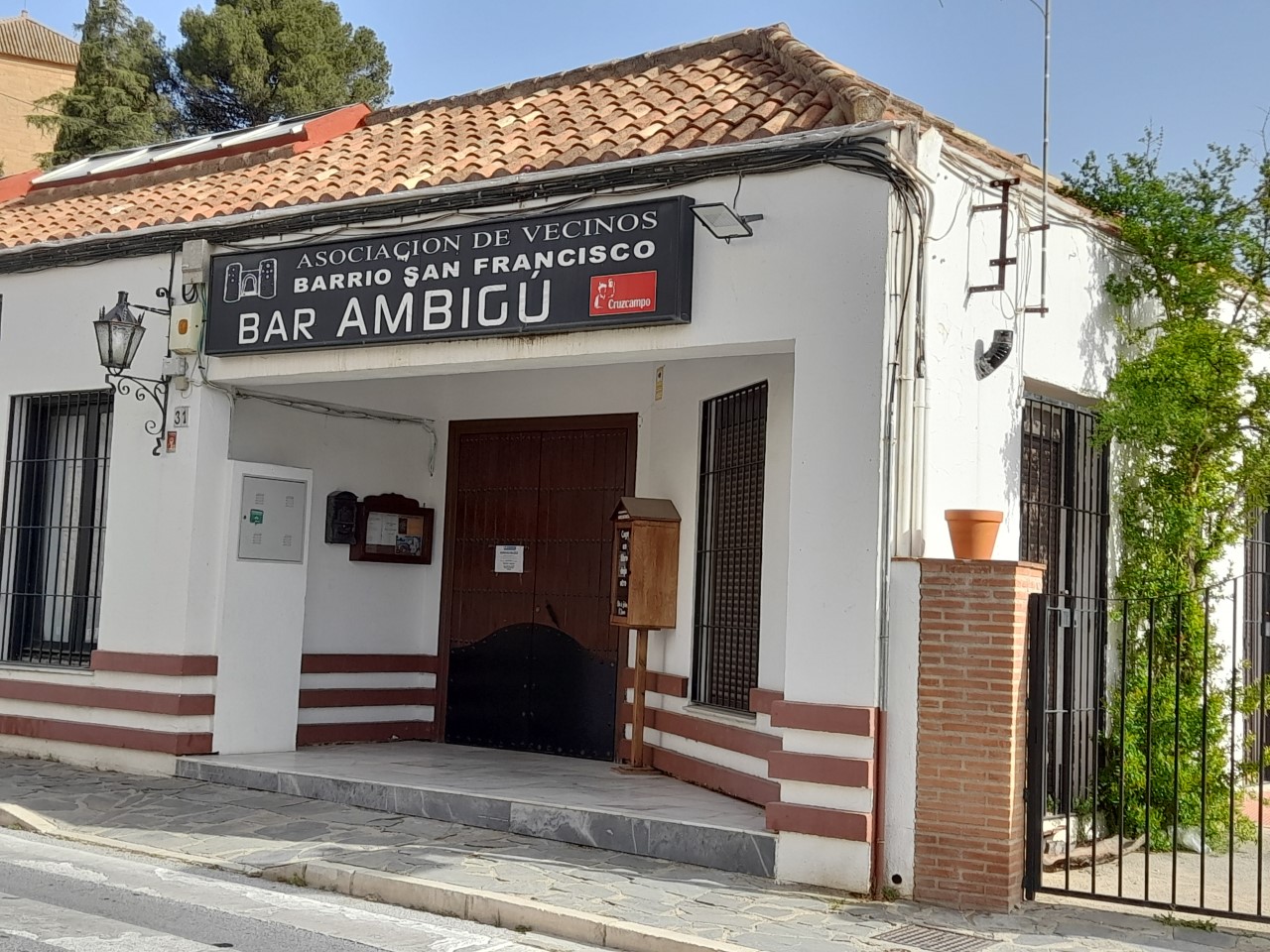 In Barrio San Francisco there is one sponsored by the A.VV. (Asociacion de Vecinos) outside Bar Ambigú next door to the CEPSA petrol station. In Barrio San Francisco there is one sponsored by the A.VV. (Asociacion de Vecinos) outside Bar Ambigú next door to the CEPSA petrol station.
The books are located in a glass cabinet in the porch, o you can access it when the bar is closed.
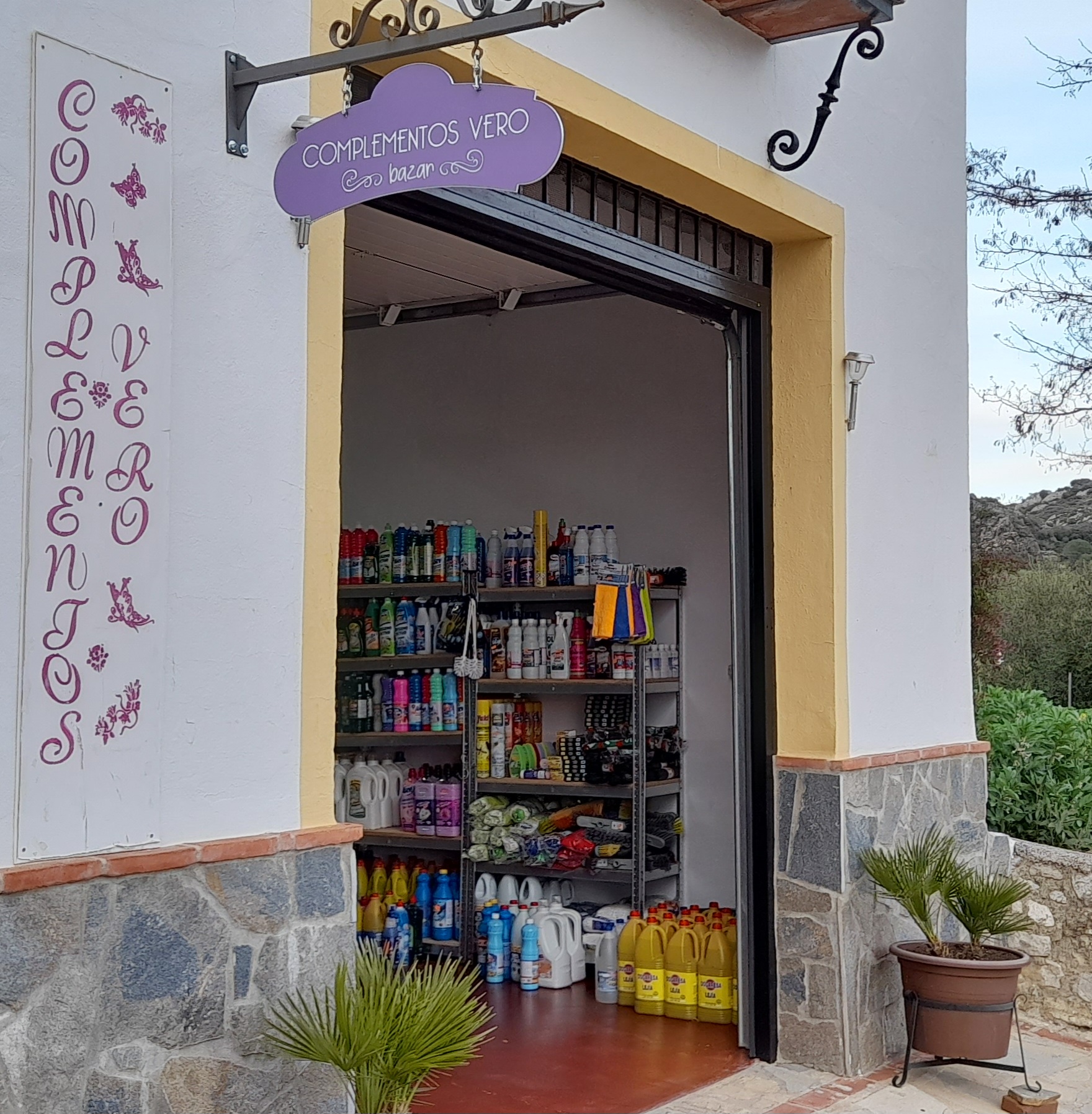 Three days ago I discovered another by chance in a bazar in Montejaque (Málaga), Complementos Vero. Three days ago I discovered another by chance in a bazar in Montejaque (Málaga), Complementos Vero.
This one has only just started up, yet has already received lots of donations of books in Spanish.
I’ve already benefited by acquiring a copy of La Casa de Bernarda Alba by my favourite Spanish playwright, Federico García Lorca, murdered in 1936 at the start of the Spanish Civil War on General Franco’s orders. I also got a book of poetry by Sevilla-born poet Antonio Machado.
 Yesterday I acquired a super book about Málaga City, full of great photos, in exchange for a hardback novel in English by John Grisham. That was inside Super Chisma, a supermarket on the polígono industrial in Ronda. Yesterday I acquired a super book about Málaga City, full of great photos, in exchange for a hardback novel in English by John Grisham. That was inside Super Chisma, a supermarket on the polígono industrial in Ronda.
I believe there are also book exchanges in Cortes de la Frontera (Málaga), Gaucín (Málaga), and Ubrique (Cádiz), three of the bigger towns around here.
There may be more. Please let us know, via the comments section.
© The Culture Vulture
Acknowledgements:
All photos by Paul Whitelock except:
main photo (Facebook)
telephone box (Wikipedia)
Tags:
Antonio Machado, A.VV., Asociación de Vecinos), Baden-Wuerttemberg, Bar Ambigú, Barrio San Francisco, Cádiz, CEPSA, Complementos Vero, Cortes de la Frontera, Culture Vulture, Detmold, Dresden, Federico García Lorca, Gaucín, General Franco, Heilbronn, John Grisham, Jülich, La Casa de Bernarda Alba, Lübeck, Málaga, Montejaque, NRW, North Rhine Westfalia, Pablo de Ronda, Paul Whitelock, Pforzheim, Ronda, Saxony, Schleswig-Holstein, Sevilla, Spanish Civil War, Super Chisma, Ubrique, Uetersen
 0
Like
Published at 4:09 PM Comments (1)
0
Like
Published at 4:09 PM Comments (1)
Spam post or Abuse? Please let us know
|
|